 "user314" (user314)
"user314" (user314)
11/03/2020 at 12:00 • Filed to: flightline, Planelopnik, planelopnik history
 8
8
 6
6
 "user314" (user314)
"user314" (user314)
11/03/2020 at 12:00 • Filed to: flightline, Planelopnik, planelopnik history |  8 8
|  6 6 |
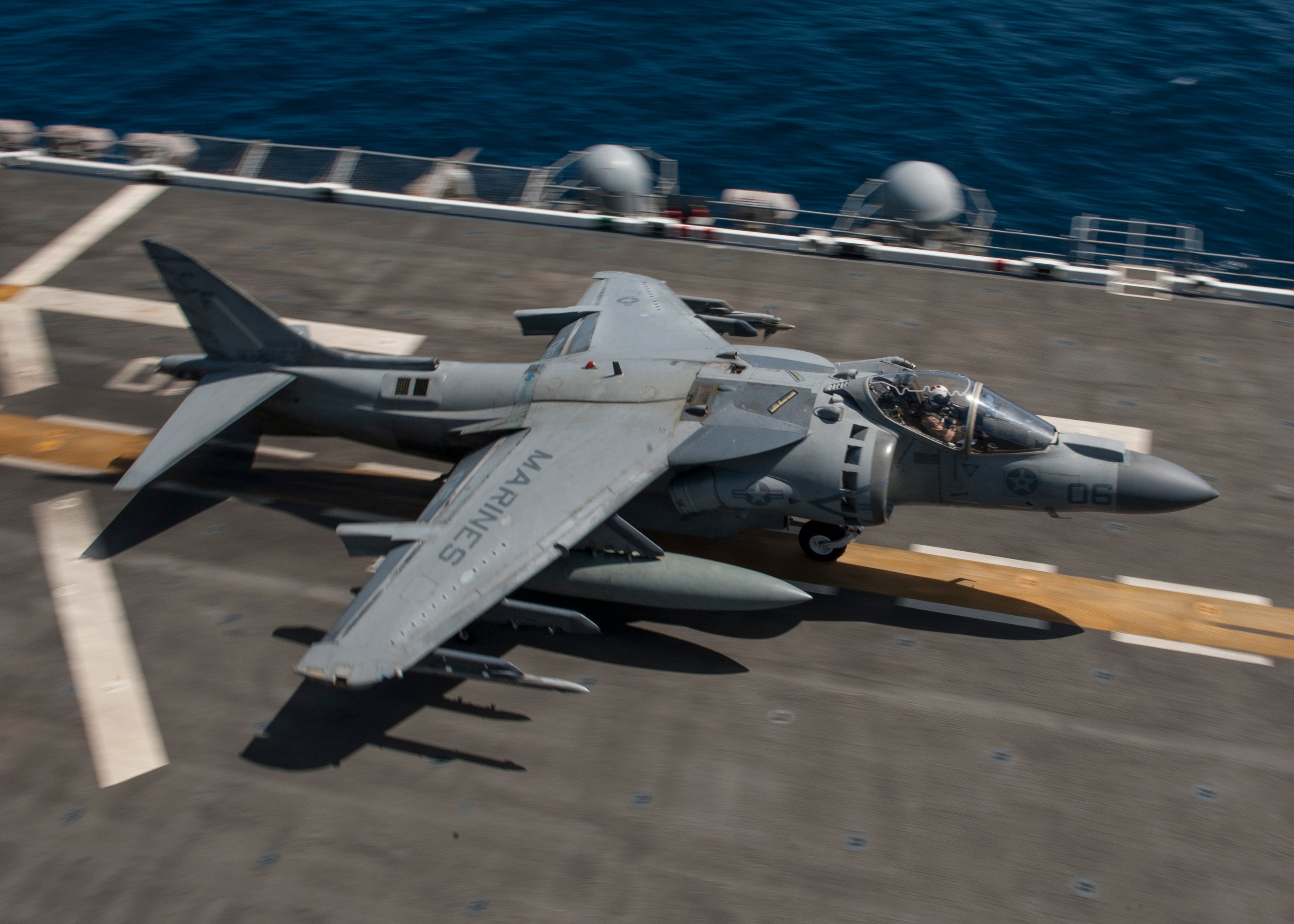
An AV-8B from VMA-163 takes-off from USS Makin Island (LHD-8)
The AV-8A was operated by the USMC beginning in 1971, but the Marines quickly found that the Harrier was less powerful than hoped, capable (with an STO) of carrying less than an A-4 over a shorter range. In 1973, a joint US/UK team began work on a project to develop a new Harrier, powered by a redesigned Pegasus 15 engine. This aircraft, dubbed the AV-16, would have double the AV-8A’s range and payload, and would replace the Harrier GR.1/3 in RAF service and the AV-8A and A-4 Skyhawk in USMC roles. The UK pulled out of the project in 1975, owing to rising costs and decreased defense spending, and the US, unwilling to foot the costs alone, canceled the program. McDonnell Douglas and Hawker Siddeley continued work on upgrading the Harrier, and in 1976 began modifying two AV-8As with new wings, revised intakes and nozzles, and other aerodynamic changes. These mules were designated YAV-8B.
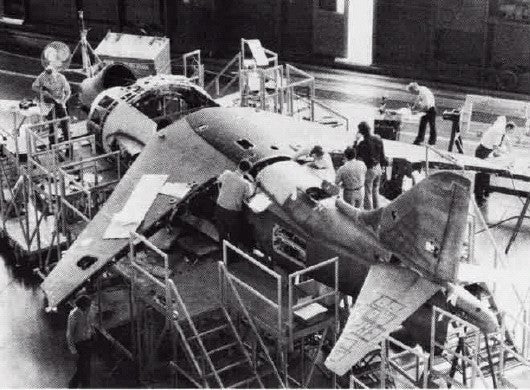
One of two AV-8As being modified into YAV-8Bs
The results showed greater than expected drag, but positive test results in other areas, including payload, range, and V/STOL performance, led to the award of a development contract in 1979. In 1981 BAe (formed by the nationalization and merger of !!!error: Indecipherable SUB-paragraph formatting!!! , !!!error: Indecipherable SUB-paragraph formatting!!! , !!!error: Indecipherable SUB-paragraph formatting!!! and !!!error: Indecipherable SUB-paragraph formatting!!! ) rejoined the program in 1981, enticed by the more affordable path McDonnell Douglas was forging. The MoU stipulated a 60/40 split between the US and UK companies, with airframe production taking place at McDonnell Douglas’ facilities in suburban St. Louis, Missouri, and BAe’s !!!error: Indecipherable SUB-paragraph formatting!!! and !!!error: Indecipherable SUB-paragraph formatting!!! facilities, and engine production split 75/25 between !!!error: Indecipherable SUB-paragraph formatting!!! (which had previously absorbed Bristol Siddeley) and P&W.
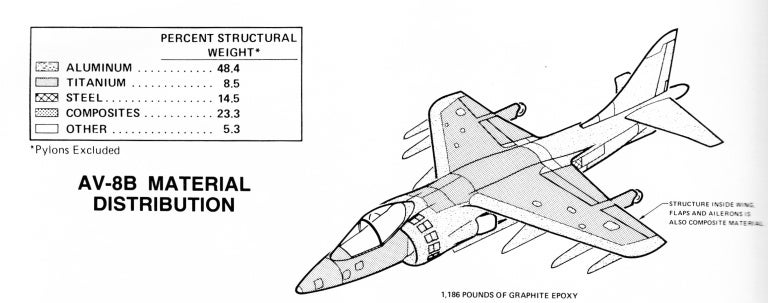
The AV-8B Harrier II was extensively redesigned from the AV-8A, with the forward fuselage extended and the cockpit raised by ten inches, providing better pilot visibility. To compensate for these changes, the rear fuselage was lengthened by a foot and a half, and a taller tail, based on that used on the Sea Harrier, was fitted. The biggest change was the new supercritical wing, which was larger than the one used on previous models (the outriggers on the AV-8B are in the same place as on the AV-8A/GR.1/3, giving a sense of scale), and had a higher aspect ratio and decreased sweep. The new wing also had leading edge extensions, all of which grants the Harrier II a 6,700lb increase in payload with a 1,000' takeoff roll. The AV-8B was the first combat aircraft to feature carbon fiber composites in its construction, with the wing and forward fuselage being almost exclusively carbon/epoxy construction, leading to the Harrier II being almost five hundred pounds lighter than if it had been constructed from metals alone.
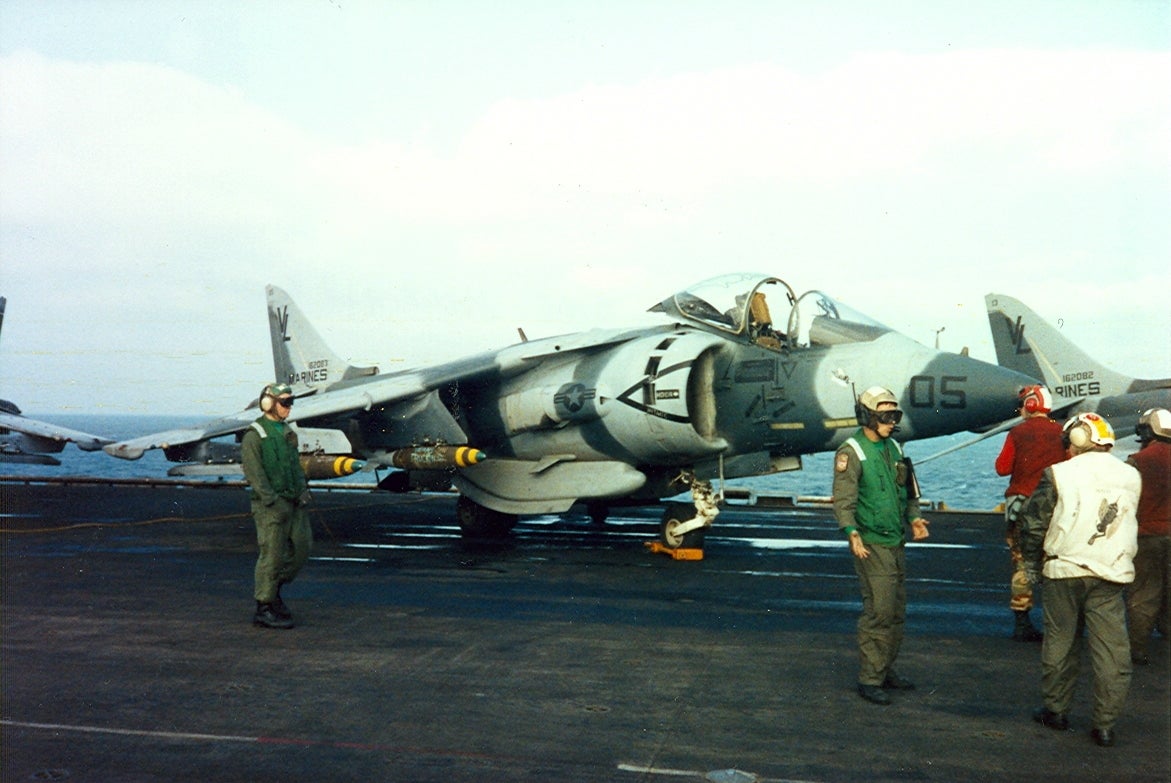
An AV-8B from VMA-331 in 1991 during Operation DESERT STORM. The squadron eventually dropped 256 tons of ordinance during the war and became the first attack squadron to operate from an amphibious assault ship
The AV-8B completed operational evaluation (OPEVAL) in 1985, and entered service with the USMC starting with USMC squadron
!!!error: Indecipherable SUB-paragraph formatting!!!
(“Bumblebees”). In 1990 Marine Harrier IIs were deployed to the Persian Gulf on the amphibious assault ships
!!!error: Indecipherable SUB-paragraph formatting!!!
and
!!!error: Indecipherable SUB-paragraph formatting!!!
as part of Operation DESERT SHIELD, flying training and support sorties. Despite plans to hold the AV-8B in reserve during the initial phases of DESERT STORM, Harriers were pressed into service on 17 January in response to a call for close air support from an USMC OV-10 Bronco against Iraqi artillery positions. The next day, AV-8s began strike missions against Iraqi targets in southern Kuwait. During Operations DESERT SHIELD and DESERT STORM, 86 AV-8Bs amassed 3,380 flights and about 4,100 flight hours, with a mission availability rate of over 90 percent. Five AV-8Bs were lost to enemy surface-to-air missiles, and two USMC pilots were killed. After the end of the war,
!!!error: Indecipherable SUB-paragraph formatting!!!
included the AV-8 along with the F-117 and AH-64 in his list of weapons that played crucial roles in the campaign. Marine Harriers remained in the Gulf region during Operation
!!!error: Indecipherable SUB-paragraph formatting!!!
from 1992 to 2003, operating from ‘phibs in the Gulf and from forward operating bases such as
!!!error: Indecipherable SUB-paragraph formatting!!!
, Kuwait.
Marine Corps Harrier IIs were later flown during
!!!error: Indecipherable SUB-paragraph formatting!!!
over Yugoslavia,
!!!error: Indecipherable SUB-paragraph formatting!!!
in Afghanistan, and the
!!!error: Indecipherable SUB-paragraph formatting!!!
.
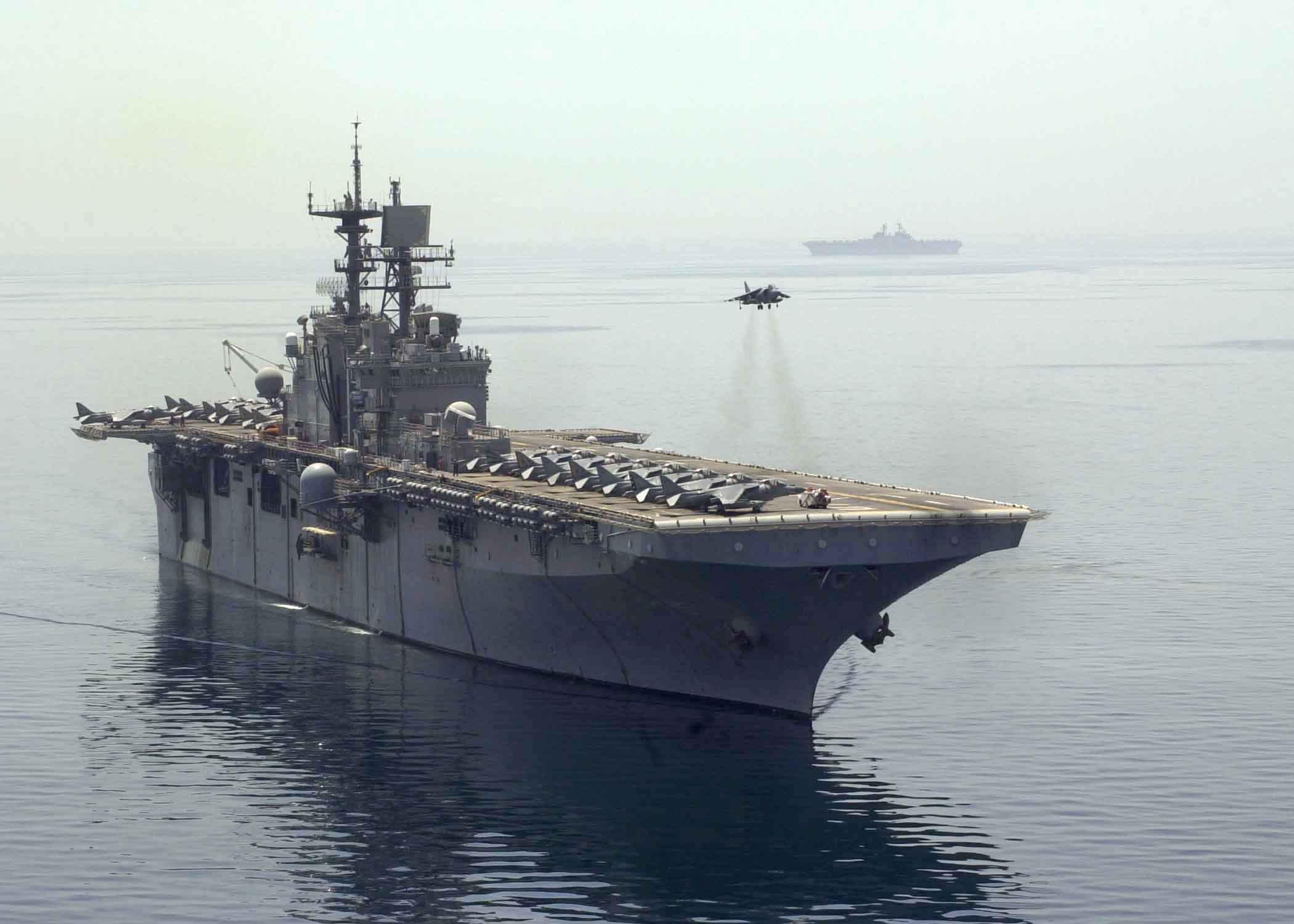
An AV-8B Harrier aircraft hovers above the flight deck of the amphibious assault ship USS Bataan (LHD 5) as the pilot makes a vertical landing. The Bataan was dubbed “Harrier Carrier” during Operation Iraqi Freedom.
Two major variants of the AV-8B were produced: the Night Attack Harrier and the Harrier II Plus. First fielded in 1991, the Night Attack Harrier featured a FLIR camera on the nose cone, a wide-angle HUD, provisions for NVGs and a digital moving map. The Night Attack Harriers are powered by a Pegasus 11-61 (aka the F402-RR-408), which produce 23,000lbf of thrust. The Harrier II+ is also powered by the -408, and is fitted with a !!!error: Indecipherable SUB-paragraph formatting!!! multi-mode !!!error: Indecipherable SUB-paragraph formatting!!! , taken from early model F/A-18s during their own upgrades to APG-73 radar. This allowed Harrier II+ to carry AIM-120 AMRAAM, as well as AGM-65 Maverick and AGM-84 Harpoon missiles, though the angle-rate bombing system was removed. Upgraded AV-8Bs are also capable of carrying a !!!error: Indecipherable SUB-paragraph formatting!!! , allowing the employment of PGMs.
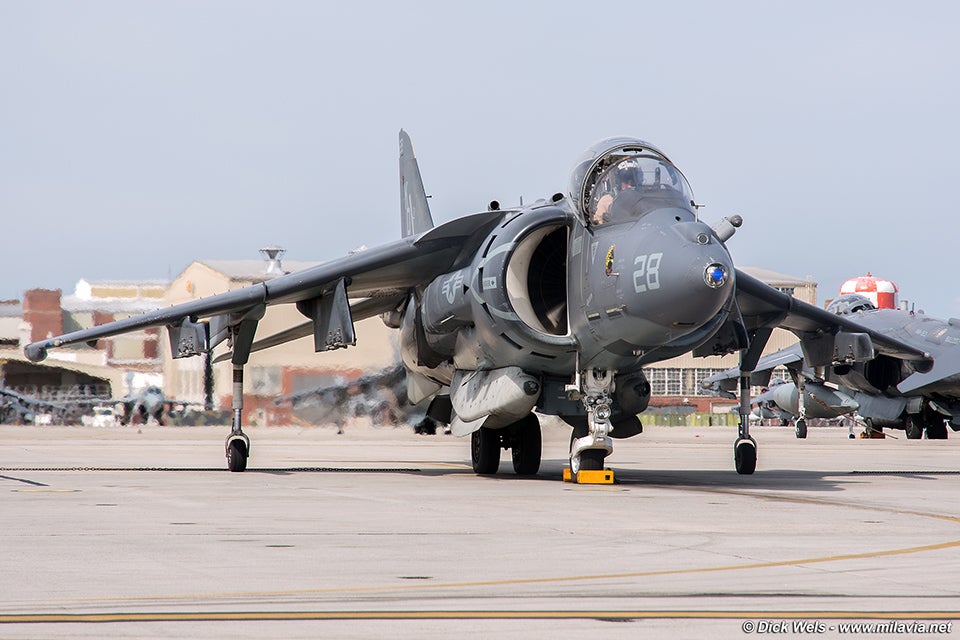
An AV-8B Night Attack Harrier, showing the FLIR camera mount on the nose.
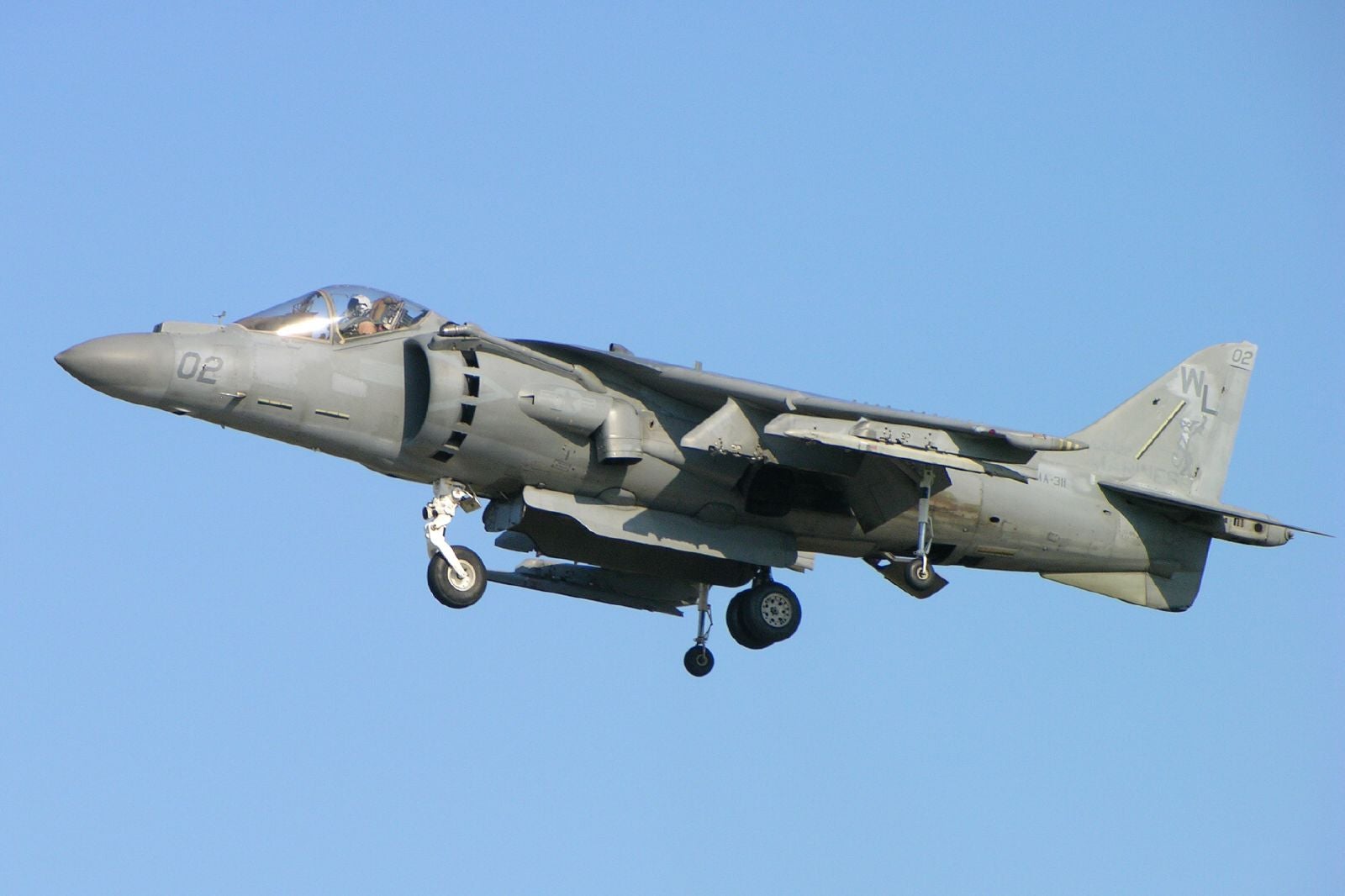
An AV-8B Harrier II+ hovering.
The Italian Navy ordered two TAV-8B trainers, followed by a further order of 16 AV-8B+ to operated from the carriers !!!error: Indecipherable SUB-paragraph formatting!!! and !!!error: Indecipherable SUB-paragraph formatting!!! . Italian Harriers were part of the nation’s commitment to the NATO campaign over Kosovo, dropping conventional and LGBs. An additional 7 aircraft were ordered in the early 200s to serve on the new carrier !!!error: Indecipherable SUB-paragraph formatting!!! , with existing aircraft also upgraded to carry AIM-120s and !!!error: Indecipherable SUB-paragraph formatting!!! guided bombs. Italy has ordered a force of 15 F-35B Lightning IIs to replace its Harriers.
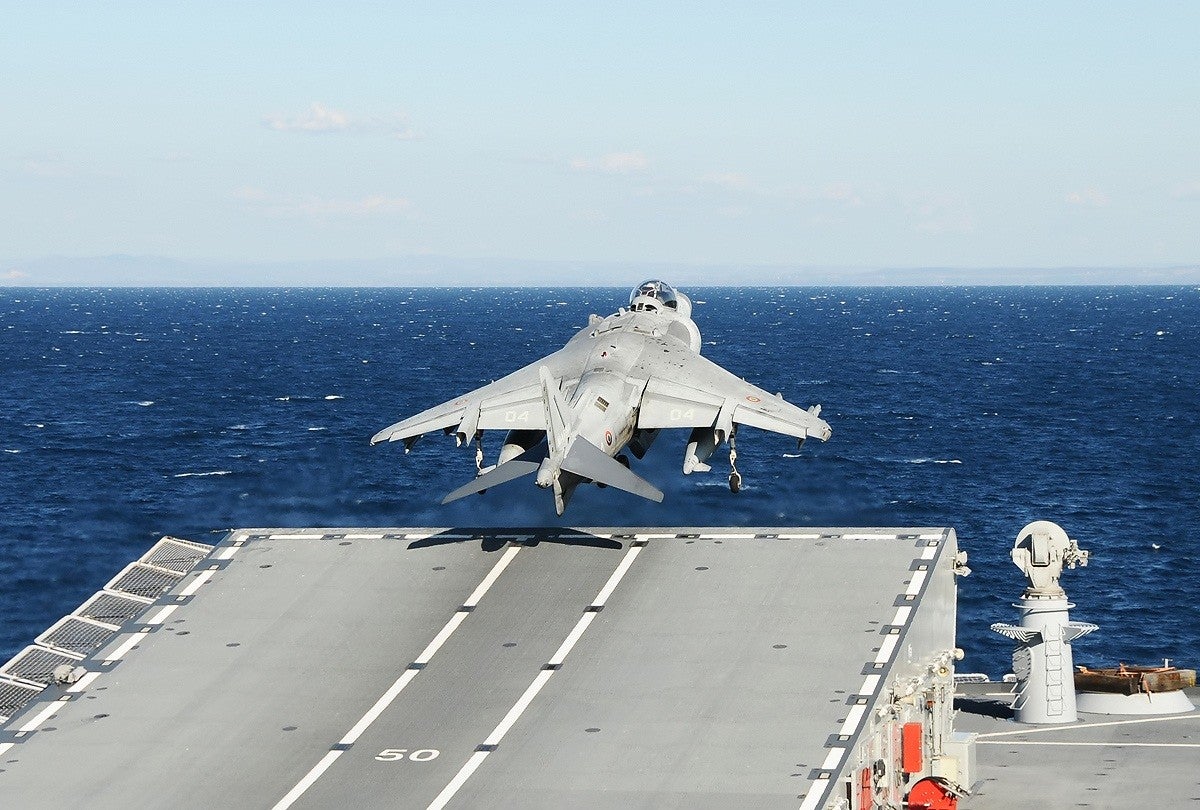
An Italian AV-8B+ launching from the carrier Cavour’s ski jump
Already an operator of AV-8A Matadors, the Spanish Navy was the first international operator of the AV-8B Harrier II, ordering 12 of its own variants, known as the VA-2 Matador II. The Matadors operated from !!!error: Indecipherable SUB-paragraph formatting!!! beginning in 1989. In 1993, an additional eight VA-2+ (the equivalent of the AV-8B+) were ordered, along with a TAV-8B trainer. In 2000, Boeing (which had absorbed McDonnell Douglas) signed a contract to upgrade a number of early model VA-2s (the number varies from 2-11) to Harrier Plus standards, allowing them to carry AIM-120 missiles. Due to budget constraints, only five of the original Matador IIs were upgraded. The Matadors were part of Spain’s commitment to !!!error: Indecipherable SUB-paragraph formatting!!! , enforcing the UN’s no-fly zone over Bosnia and Herzegovina. After the Asturias was decommissioned in 2013, the Matador IIs operate from the amphibious assault ship !!!error: Indecipherable SUB-paragraph formatting!!! . Spain was interested in replacing the VA-2s with F-35Bs, but has instead settled on extending the Matador’s service life, citing the cost of replacements.
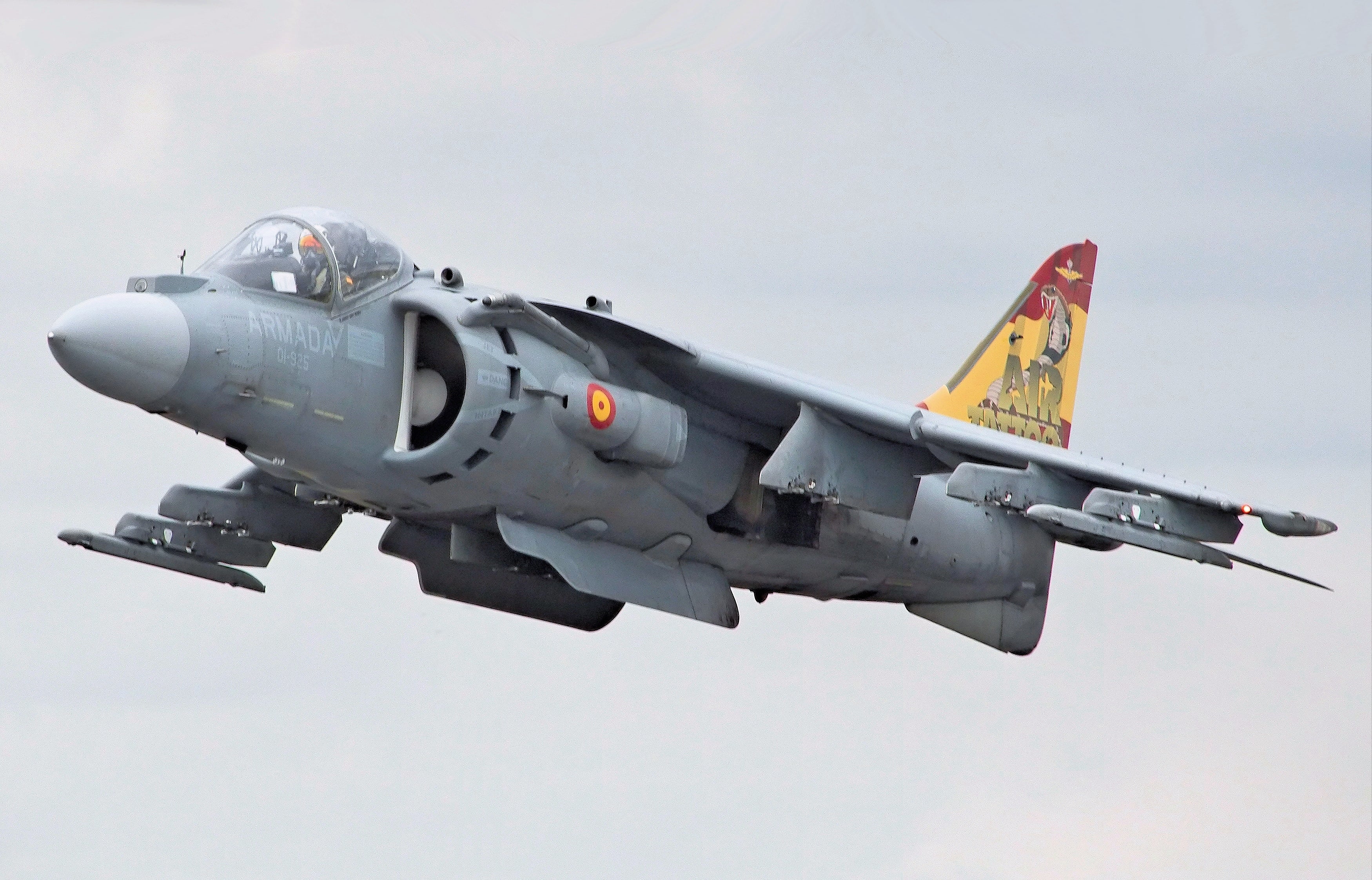
A Matador II+ over RIAT in 2019
The first RAF Harrier II, known as the GR.5, entered service in 1987, replacing earlier GR.1 and GR.3 variants. The GR.5 differed from the AV-8B in that it had stainless steel leading edges to meet RAF bird-strike requirements, as well as in avionics and weapons. The RAF’s GR.5s were considered too immature a system to be deployed for the 1991 Gulf War, though several were dispatched to patrol the no-fly zones in 1993. Beginning in 1990 BAe began testing an up graded Harrier II GR.7 , which was broadly similar to the Night Attack AV-8B. After a successful test program 34 GR.7 were delivered through 1991, with the existing GR.5s upgraded beginning the same year. The GR.7s, hastily modified with GPS navigation, were deployed with NATO forced to the former Yugoslavia, and carried out recon and strike missions, often dropping LGBs on targets designated by !!!error: Indecipherable SUB-paragraph formatting!!! . Later, GR.7s were part of the UK’s commitment to the wars in Afghanistan and Iraq. Beginning in the middle 2000s, BAe began development of the GR.9 upgrade, which would improve communications, ground proximity warning and navigation systems, followed by the integration of the AGM-65 Maverick air-to-ground missile. The GR.9 upgrade also included replacement of fatigued airframe components. GR.9s were deployed to Afghanistan in 2007, allowing aged GR.7s to be withdrawn. The stresses of war and advancing age of the fleet caused the wholesale retirement of the RAF’s Harrier IIs in 2011, with their tasks being assigned to Tornado GR.4s until delivery of the F-35B Lightning.
 wafflesnfalafel
> user314
wafflesnfalafel
> user314
11/03/2020 at 12:05 |
|
T hose things scare me - super cool, but they always seem to be about ready to fall out of the sky. And man are they loud.
 A Boy and His Longtail
> user314
A Boy and His Longtail
> user314
11/03/2020 at 12:09 |
|
The Harrier is such a cool jet
 facw
> user314
facw
> user314
11/03/2020 at 12:31 |
|
One neat thing about the Harrier is that the wing comes off as single unit for maintenance, transport, or replacement :
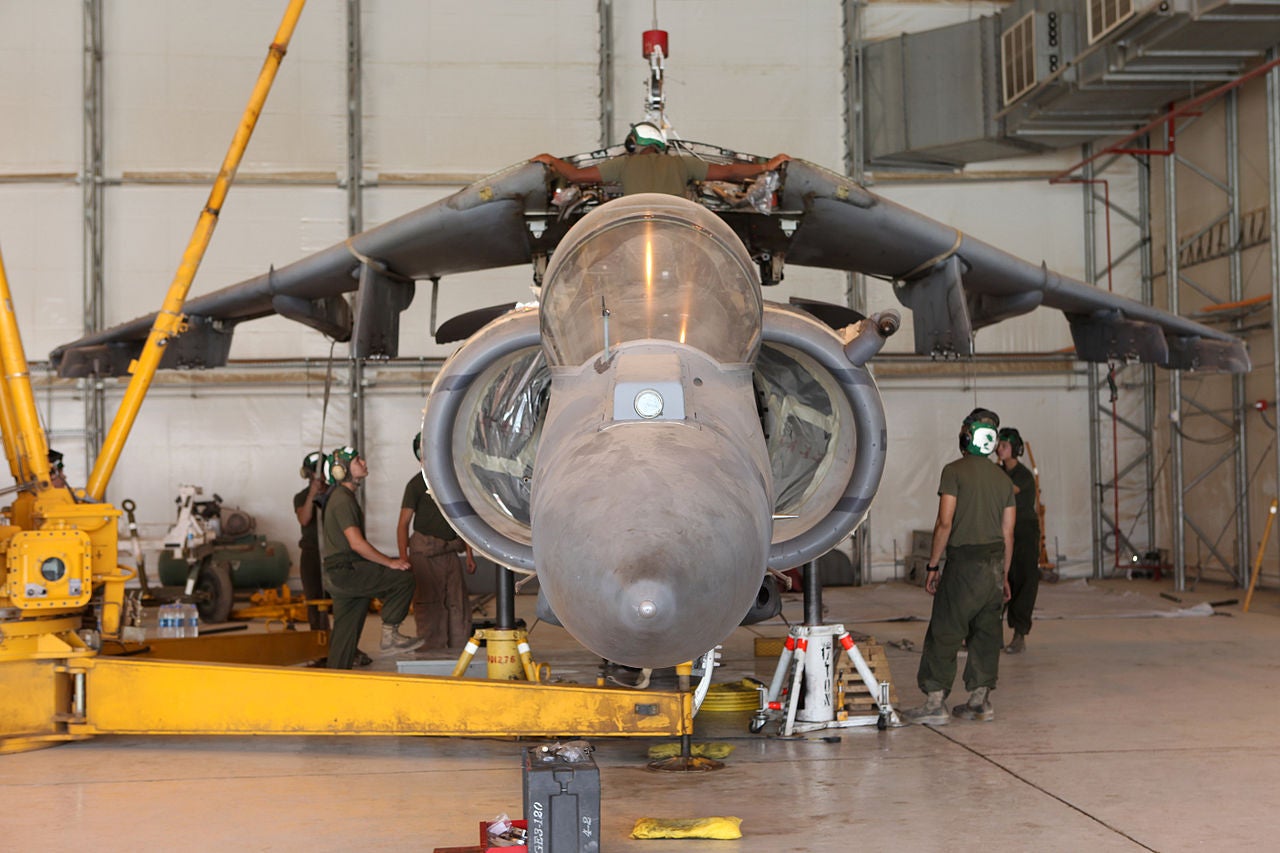
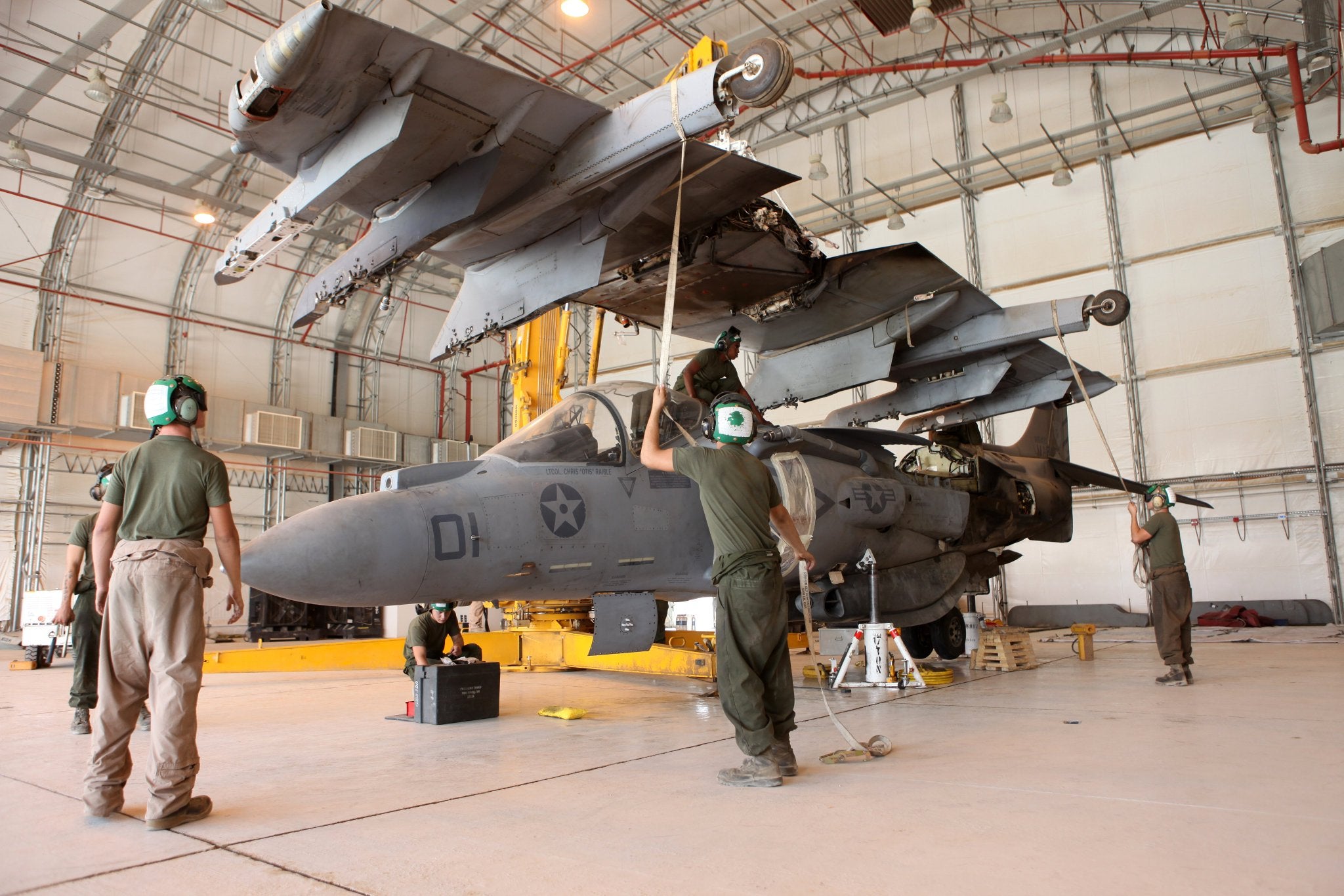
 ttyymmnn
> facw
ttyymmnn
> facw
11/03/2020 at 12:38 |
|
TIL
 user314
> facw
user314
> facw
11/03/2020 at 12:41 |
|
Pretty sure all the Harrier model kits I’ve done have assembled the same way. Interesting that they leave the pylons and outriggers in place, though I guess it makes sense.
 chaozbandit
> user314
chaozbandit
> user314
11/03/2020 at 13:18 |
|
Harriers have better paint than the majority of CF188s, fact .